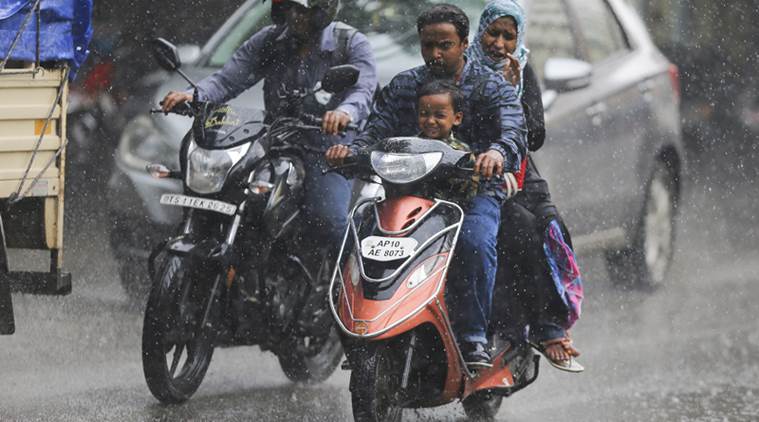This section page brings you real-time weather updates and accurate forecasts for cities across India. Get updates on today’s temperature, live weather conditions, rainfall updates, humidity levels, and short- and long-term forecasts on this page. With the Check Weather in Your City feature, users can quickly find today’s weather conditions for their location, including current temperature, humidity, and prevailing conditions. The Weather in Major Indian Cities section offers a quick snapshot of weather conditions in key cities, allowing readers to compare temperatures and conditions across India’s largest urban centres at a glance. For wider coverage, the City-wise Weather Across India section provides an extensive, searchable list of cities, ensuring weather details are accessible not only for major hubs but also for regional towns and smaller locations. To highlight temperature extremes, the page also features regularly updated lists of the Top 5 Hottest Cities and Top 5 Coldest Cities in India , giving readers instant insight into heatwave and cold-wave conditions across different parts of the country. In addition to live data, the page curates the latest weather-related news from across India, including reports on heatwaves, monsoon progress, extreme rainfall, cyclones, cold spells, and advisories issued by the India Meteorological Department (IMD). These stories add critical context to daily weather updates by explaining how broader weather systems are affecting regions and communities. By combining real-time city weather, nationwide temperature trends, and trusted news coverage, The Indian Express’s weather hub helps readers stay informed, prepared, and ahead of changing weather conditions across India.
Most delayed monsoon withdrawal since 1961, finally commences: IMD
Normally, the monsoon withdrawal begins from extreme northwest parts of the country, covering Rajasthan and Punjab, around September 1 and reaches central India states such as Maharashtra by October 1.
 The 2019 monsoon has remained the longest season ever, with the retreat being termed as the most delayed one to commence over India. (AP File Photo/Representational)
The 2019 monsoon has remained the longest season ever, with the retreat being termed as the most delayed one to commence over India. (AP File Photo/Representational)
After a delay of 39 days, the Southwest monsoon finally commenced its withdrawal on Wednesday, the India Meteorological Department said a little while ago. With this, the 2019 monsoon has remained the longest season ever, with the retreat being termed as the most delayed one to commence over India.
A similar delay in the commencement of monsoon withdrawal was last recorded over the country in 1961, when it was experienced on September 30.
EXPLAINED | Why monsoon isn’t over yet
“In view of persisting anticyclone circulation and the gradual reduction in moisture, the Southwest monsoon has withdrawn from parts of Punjab, Haryana and north Rajasthan,” stated the latest IMD’s afternoon weather bulletin issued today.
Normally, the monsoon withdrawal begins from extreme northwest parts of the country, covering Rajasthan and Punjab, around September 1 and reaches central India states such as Maharashtra by October 1.

However, this year, the withdrawal was highly delayed owing to the monsoon getting re-activated and both the Arabian Sea and the Bay of Bengal pumping-in moisture to the mainland. Though, the withdrawal features seemed to appear from time-to-time during the last few days, none persisted long enough.
The weather agency declares monsoon withdrawal generally when an anticyclonic circulation is formed over northwest India with significant reduction in the moisture levels over the region and a reduction in rainfall over the region for at least five consecutive days.
All through the season and until recently, both the Arabian Sea and the Bay of Bengal remained highly active, thereby keeping the monsoon currents flowing constantly.
“Besides, very severe cyclonic storm, Hikka too, was formed in the Arabian Sea towards the fag end of the season which contributed to moisture incursion over Kutch, Saurashtra and Maharashtra. Though the system moved towards Oman, it caused rainfall over the north-western areas during September in the initial days of its formation, off Gujarat coast. Another cyclonic circulation, that originated in the Bay of Bengal, caused widespread rainfall over Bihar and Uttar Pradesh until last week,” officials at IMD, Pune told The Indian Express.
However, with favourable atmospheric conditions now forecast, IMD has said there would be swift retreat from rest of the regions of northwest and central India, in the next two to three days.
This year, September recorded 52.3 per cent excess rainfall with central India (107.2 per cent) and South Peninsula (48.8 per cent) remaining the wettest regions in the country during the last month. As a result, September 2019 was the second wettest month during the monsoon season since 1917.
- 01
- 02
- 03
- 04
- 05































